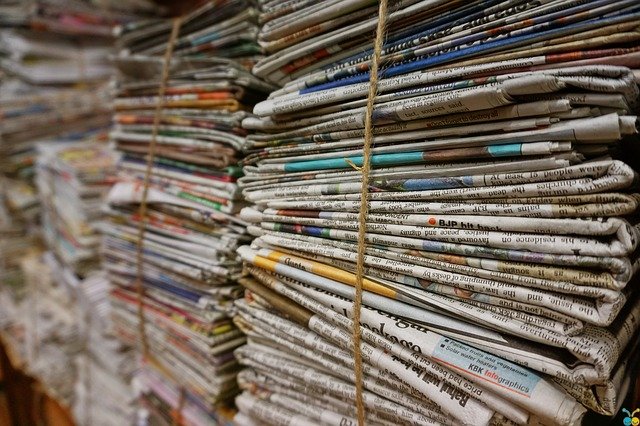Louise Bolotin* stepped sideways from journalism to subediting, and starting copyediting 16 years ago. In this article, she looks at what subediting entails – and how it is similar to but different from copyediting.
 Here’s what I’ll cover in this article:
Here’s what I’ll cover in this article:
- The types of editors involved in periodicals
- The speed and interventionist nature of subediting
- Adding headlines and rewriting text
- The importance of house style, facts and legalities
- Working as a subeditor
- Transferring skills and learning new ones
- The jargon of subediting
I’m often asked what’s the difference between copyediting and subediting: ‘Isn’t it all just editing?’ Well, yes. But also no – there is an overlap between subediting and copyediting, but they’re not the same because they require different skillsets. For one thing, we have legal responsibilities that go far beyond what a book copyeditor may need to flag for a publisher – more on this below.
After ten years as a journalist who writes, I stepped sideways into subbing. The move was almost accidental, but I quickly discovered I’d found my niche. For over three decades I have subedited magazines and newspapers, often in newsrooms but these days largely remotely (even pre-Covid).
Types of editor
A periodical has many staff with the title of editor. The actual editor is the boss of the publication and will have a deputy editor. Commissioning editors don’t edit, but commission features. The picture editor is in charge of selecting images. The production editor oversees the production – page layouts, liaising with the printer, and so on. Subeditors edit the copy and, importantly, we are generally the last line of defence as there are no proofreaders to give everything the final check.
Fast and substantive changes
Subs generally work very fast because deadlines are always on our back. There is no time to dither over where to place a comma or muse on whether a particular paragraph should be moved. We make these decisions at lightning speed. What we do is substantive, but much more than what a copyeditor might consider to be substantive – it is directly interventionist.
Once a journalist has filed their copy, it is out of their hands. I might check with them to clarify something, but beyond that, they have no control over what we do with what they’ve written. They’ll already be busy writing their next piece anyway, but if you want to know what happens when a journalist gets precious about their copy, just google ‘Giles Coren subs’. Subbing can be a thankless task – make an error and you get it in the neck from all sides. Get it right and it’s the journalist who gets the praise, even though you saved their skin by polishing their dreadful prose.
Adding headlines and rewriting
As well as cleaning up spelling, grammar and punctuation, I will write a headline for each story, crossheads and captions if there are photographs, although, unusually, the last paper I worked for carried no standfirsts. Some subs work as layout subs, meaning they will edit within page layout software such as InDesign or QuarkXPress. Subs working on online publications will have a good knowledge of SEO for headlines.
Subbing can involve rewriting lacklustre copy so it has more oomph, and a lot of cutting to fit the allocated column centimetres on the page. I’m a big fan of cutting – I like a lean article in which every word earns its place on the page. I will freely move entire sections around as the opening paragraphs of any news story or feature must involve the five Ws – who, what, when, where and why (plus the occasional H for how).
If it turns out the most interesting angle of the story is three-quarters of the way down, I will renose it and write a new headline. In a newsroom, I may send a story back if it’s not up to scratch and instruct the reporter to redo it quickly.
House style, facts and legalities
I keep the house style guide in my head and only look at the printed copy when absolutely stuck – often it’s quicker to ask a suitable colleague. Fact-checking is a key part of the job – as well as asking the journalist to confirm something, I’ll spend time on the internet scouring Wikipedia or googling, or thumbing the local A-Z. If we receive collects, I check copyright by doing an image search on the internet, as you can’t publish photos lifted off Facebook, for example.
And then there is the legal stuff. Almost all periodicals are signed up to the regulator, the Independent Press Standards Organisation (IPSO) and its Editors’ Code. The Code covers issues such as accuracy and privacy, intrusion into grief, reporting suicide, reporting anything on children including sexual abuse, reporting crime and criminal trials, and the public interest.
Subeditors must ensure stories comply with the Code. For example, children in sexual abuse cases cannot be identified, so we will remove not only their name and age but anything else relevant, including factors identifying their abuser if those could identify the victim. With crime reporting, we ensure everything committed by a perpetrator is described as ‘alleged‘ and only alleged unless and until they are found guilty at trial. A sub will also have a good head for defamation issues and refer to McNae’s Essential Law for Journalists, our legal bible.
Working as a subeditor
Until recently I worked the freelance shift at a local weekly newspaper as the sole subeditor. My typical day, in an eight-hour shift that generally included a lunchbreak consisting of a sandwich at my desk while I kept working, looked something like this: The paper had four localised editions that carried unique content specific to those locations as well as content common to all editions. On my shift, I would edit four different splashes and four different back pages, around eight pages of local stories for each edition and eight or ten pages of stories for all editions. There were six pages of sports, six pages of readers’ letters and anything else, such as WI reports and church news. On an average shift, I’d edit around 70 pages.
Transferring and learning
When I made the partial switch to copyediting books 16 years ago, it was a steep learning curve. I was baffled by a lot of copyediting lingo and spent a lot of time looking up terms such as folio, running head and solidus (what subs call a slash).
Subediting is a highly transferable skill; many of us also work as copyeditors for corporate clients because the skillset is ideal. The bible for subeditors is Subediting and Production for Journalists (2nd edn) by Tim Holmes and a good starting place for copyeditors thinking of taking training in subediting.
Subs’ jargon
Byline – credit for the journalist who wrote the story
Collect – a photograph submitted by a reader or someone in the story, such as a crime victim
Crosshead – a sub-heading
Deck – the number of lines in a headline, rarely more than three
Flatplan – the page plan that shows where every article and advert will go
Go off stone – go to press, also known as putting the paper to bed
NIB – a one-paragraph story, short for news in brief
Overmatter – excess copy that has to be cut
Renosing – rewriting the story because you found a better angle lower down
Sells – very short article descriptions on a magazine cover
Spiked – when a story gets dropped
Splash – front page story
Standfirst – the paragraph under the headline that summarises the story in a longer sentence
Strap(line) – introductory words above the main headline
Summing up
The daily life of a subeditor has a different pace to that of a copyeditor, but requires similar skills, including decision-making and having the right knowledge (or being able to track it down) to make changes where appropriate. Have you moved from one kind of editing to another? Or from working one format to another? Tell us about your experiences in the comments below.
*Louise Bolotin died in October 2022; her contributions are much missed.
About Louise Bolotin
 Louise Bolotin has worked as a subeditor since the late 80s, for household name magazines as well as local newspapers and online publications. Last year she developed a webinar on the basics of subediting and has begun offering bespoke training to niche publications. She is an Advanced Professional Member of the CIEP and says there is no truth in the rumour that she trained at the Slash and Burn Academy of Subediting.
Louise Bolotin has worked as a subeditor since the late 80s, for household name magazines as well as local newspapers and online publications. Last year she developed a webinar on the basics of subediting and has begun offering bespoke training to niche publications. She is an Advanced Professional Member of the CIEP and says there is no truth in the rumour that she trained at the Slash and Burn Academy of Subediting.
 About the CIEP
About the CIEP
The Chartered Institute of Editing and Proofreading (CIEP) is a non-profit body promoting excellence in English language editing. We set and demonstrate editorial standards, and we are a community, training hub and support network for editorial professionals – the people who work to make text accurate, clear and fit for purpose.
Find out more about:
Photo credits: World Business by AbsolutVision on Unsplash; bundled newspapers by Pexels on Pixabay.
Posted by Abi Saffrey, CIEP blog coordinator.
The views expressed here do not necessarily reflect those of the CIEP.

